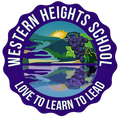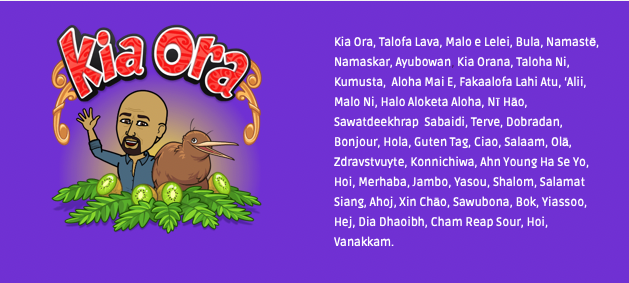Principal's Page

Kia Ora - Greetings Friends
I often discuss with our WHS staff a theory that I developed 30 years ago. I contend that humans have four original languages that date back to our beginning as a species.
There is a fifth language - the written word - but that developed and evolved long after the four original languages were in place. The printing press, for example, is only a thousand or so years old. The first written language appeared about five thousand years ago. Cave paintings (visual language) date back at least 37,000 years, and Aborigines danced the Corroboree (movement language around 60,000 years ago. Music accompanied those dances, therefore equal in age, and stories have been told as far back as our time began as humans.
The Four Original Languages
No matter where we call home, where we were raised, or what we ate for breakfast, our brains process information pretty much the same as anyone else in the world. This makes sense—our genomes are 99.6 - 99.9% identical, which makes our brains nearly so.
I believe learning is life. The only way we survive and thrive is through learning. Our brains are hard-wired to process learning and communicate learning in four ancient and distinct ways - via the Four Original Languages.
- Language of Music
- Visual Language
- Language of Story Telling
- Language of Movement
Movement As A Language
Language is a form of communication - of receiving and transmitting information. Movement was one of our first responses to the receipt of information. If we consider even the simplest of life forms - amoeba - they can do two simple things: feel their chemical environment and move.
On the step above amoeba, we find more complex creatures with additional senses, nervous systems, and brains. They use primitive signalling with rhythmic behaviour. Moving up the level of creature complexity, those more complex creatures use sounds. And at our creature level, we use language.
Language and thinking are evolved versions of feeling and moving and still include those as a basis.
There is a universal language in which all people everywhere can express themselves and understand one another. It is the language of movement. We are all using this language all the time. Whatever we are doing, the movements of our bodies express something of what we are feeling. Movement expresses feelings in the same way that we can use words to express feelings.
Movement (sometimes accompanied by sound and touch) is the main language for babies.
Like all forms of expression, movement language can be cultivated aesthetically and become an art. That art is dance. Movement is the primary art in many ways because everything we do involves movement.
Dance is structured like a language. Movement can be more powerful and subtle than text when it comes to capturing the visceral dynamics of movement, the sensual texture of experience.
Dance is a basic human need, and all people should have an opportunity to express themselves through dance. I would argue that Dance is the hidden language of the soul. Some dance forms tell stories or interpret music, connecting three original languages in one expressive event. Many children move to learn, and many more need the opportunity to learn to move. Both enrich the learning experience and help embed and express the learning.
More on movement on the Learning Page in this newsletter.
As always - if you have questions or concerns about anything school-related - email me at macash@mac.com, and I will get back to you asap.
My very best regards to you all,
Ash Maindonald
Principal.

